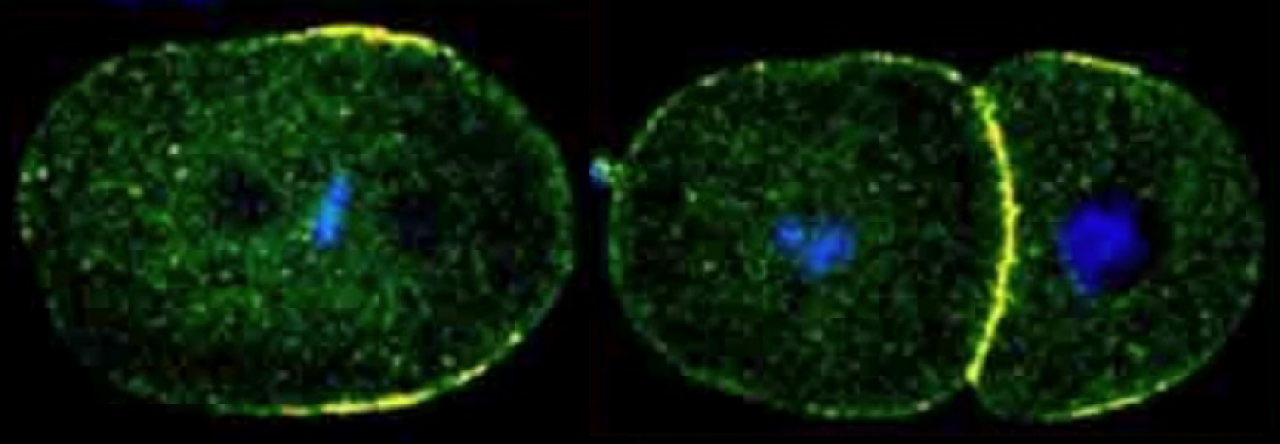The Rose Lab is located in the Department of Molecular and Cellular Biology at the University of California, Davis.
The main focus of the lab’s research is to understand the molecular mechanisms that regulate asymmetric division. Asymmetric divisions are ones in which daughter cells are different from each other. During intrinsically asymmetric divisions, the parent cell is polarized for particular cortical or cytoplasmic components, and then the division plane bisects this axis so that the daughter cells inherit different constituents, which gives them different developmental fates. The cells are also often unequal in size. During extrinsically asymmetric divisions, although the parent cell is not polarized internally, division orientation places daughters in different positions and thus different environments, which results in different fates. Both types of asymmetric division are important for generating cell diversity during development, as well as for the ability of adult stem cells to produce a self-renewing stem cell and a daughter that differentiates; asymmetric division also affects the proliferative capacity of some cell types and defects in spindle positioning have been implicated in cancer. We utilize the model system C. elegans for the majority of our studies, and employ a variety of genetic, molecular and cell biological techniques.
Asymmetric division of the C. elegans embryo
Movie of a one-cell C. elegans embryos expressing MEX-5::mCherry (purple) and PIE-1::GFP. Both are uniform at the start but become asymmetrically localized to opposite anterior and posterior poles of the embryo. The division plane bisects the polarity gradient so that the daughter cells are different.
